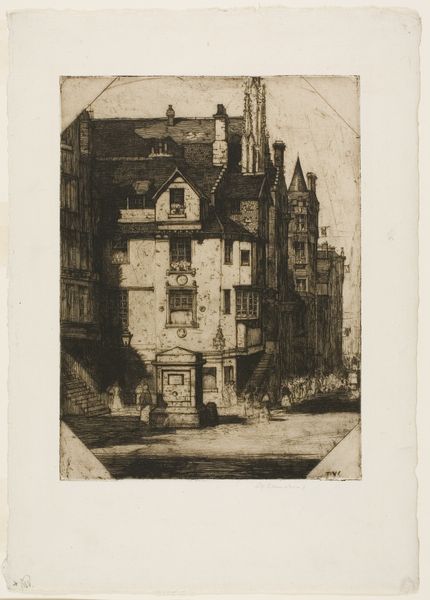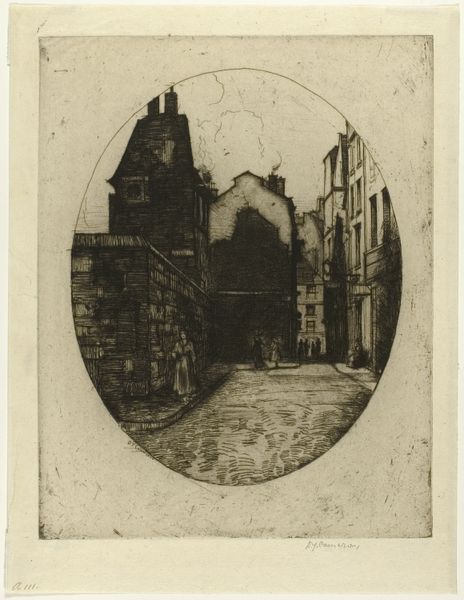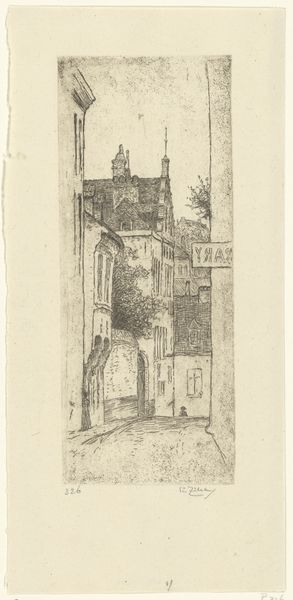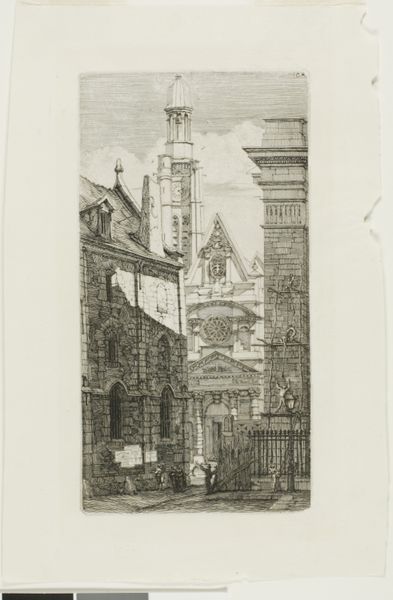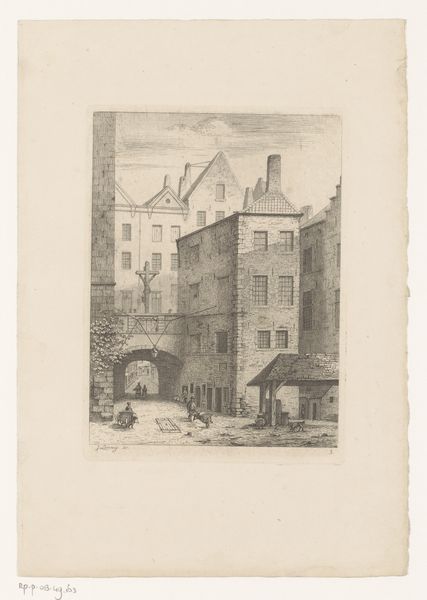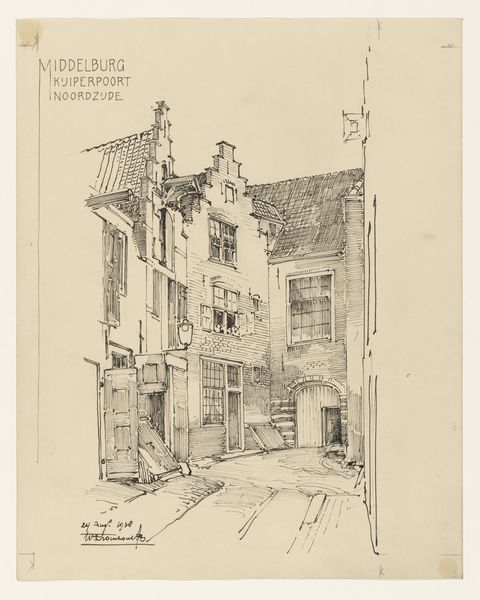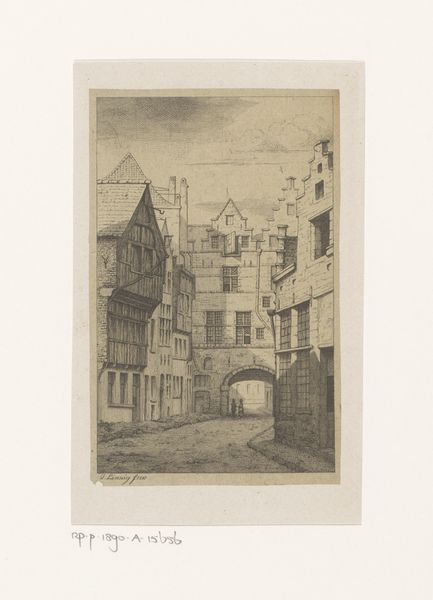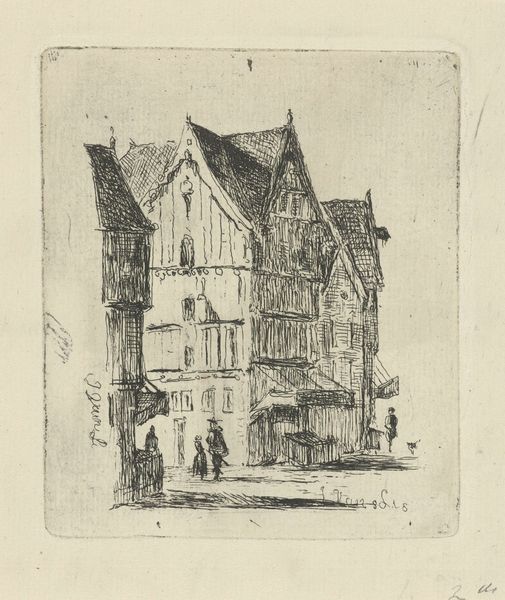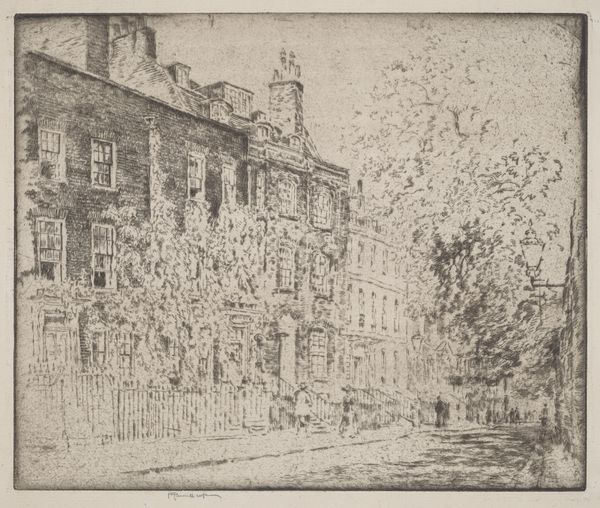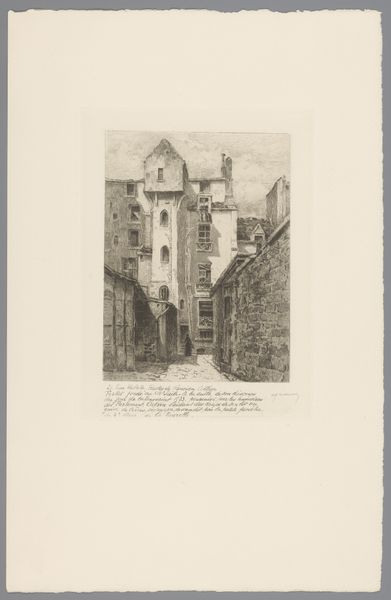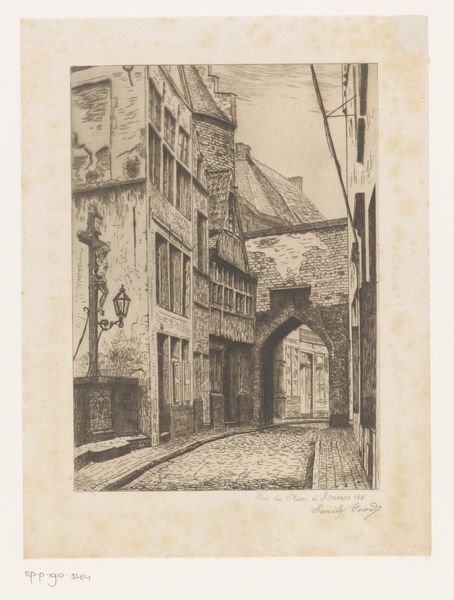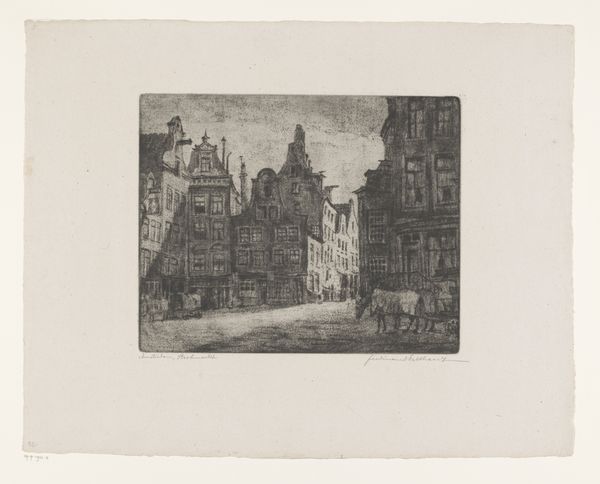
Dimensions: 281 × 219 mm (image); 347 × 246 mm (Sheet)
Copyright: Public Domain
Curator: My first impression is that this etching gives off a hazy, quiet mood, like a memory surfacing. Editor: That's interesting. This is Joseph Pennell’s "Cowley Street, Westminster," created in 1906. It's an etching on paper, part of the Art Institute of Chicago's collection, and captures a slice of Edwardian London. I think the medium lends itself perfectly to creating that wistful quality. Curator: Exactly! The lines are so delicate, almost dissolving into the paper. It makes me wonder, what drew Pennell to this particular street? It's so unassuming, not some grand vista. It makes me think about what gets valorized through artmaking, and why? Editor: Well, Pennell was known for his cityscapes, capturing the changing face of urban life during a time of rapid industrialization. Focusing on the ordinary was actually key. Artists used the urban spaces of the fin de siècle period to map issues relating to gender, class and race. A turn-of-the-century urban space in London likely presented challenges for a range of subjects. Curator: Absolutely, you're so right. And thinking about that gaze, I see that he finds a sort of beauty, almost an intimacy, in the everyday. It's not about glorifying anything, but just observing, reflecting... Does that make sense? Editor: It does, though it’s a reflection filtered through his own perspective, shaped by the conventions of his time. What feels "intimate" to us now might have encoded certain social power dynamics back then. Still, thinking about how places evolve, gentrify, disappear... there's a ghostliness to this image that anticipates all that, even a century later. Curator: It really makes you think about those layers, the history embedded in the very stones of those buildings. Thanks for bringing that to light! I was initially lost in the aesthetics of it, but it definitely has layers that touch on urban development, social dynamics, and maybe a melancholy sense of impermanence. Editor: Right, I hadn't thought about the impermanence and melancholia, I like that a lot. These are not simply aesthetic studies. They’re historical documents. And they become incredibly potent when we begin to activate those cross-temporal relationships.
Comments
No comments
Be the first to comment and join the conversation on the ultimate creative platform.
